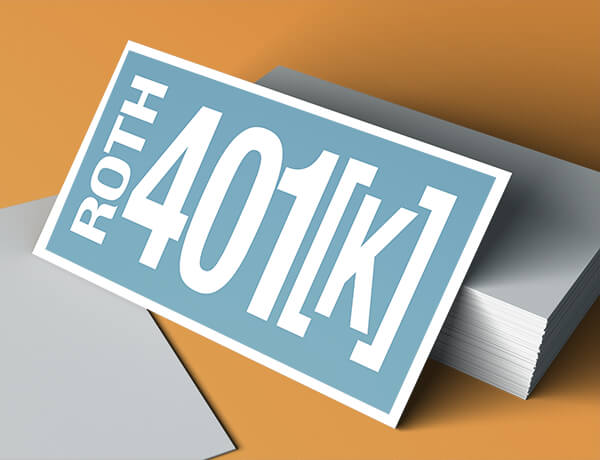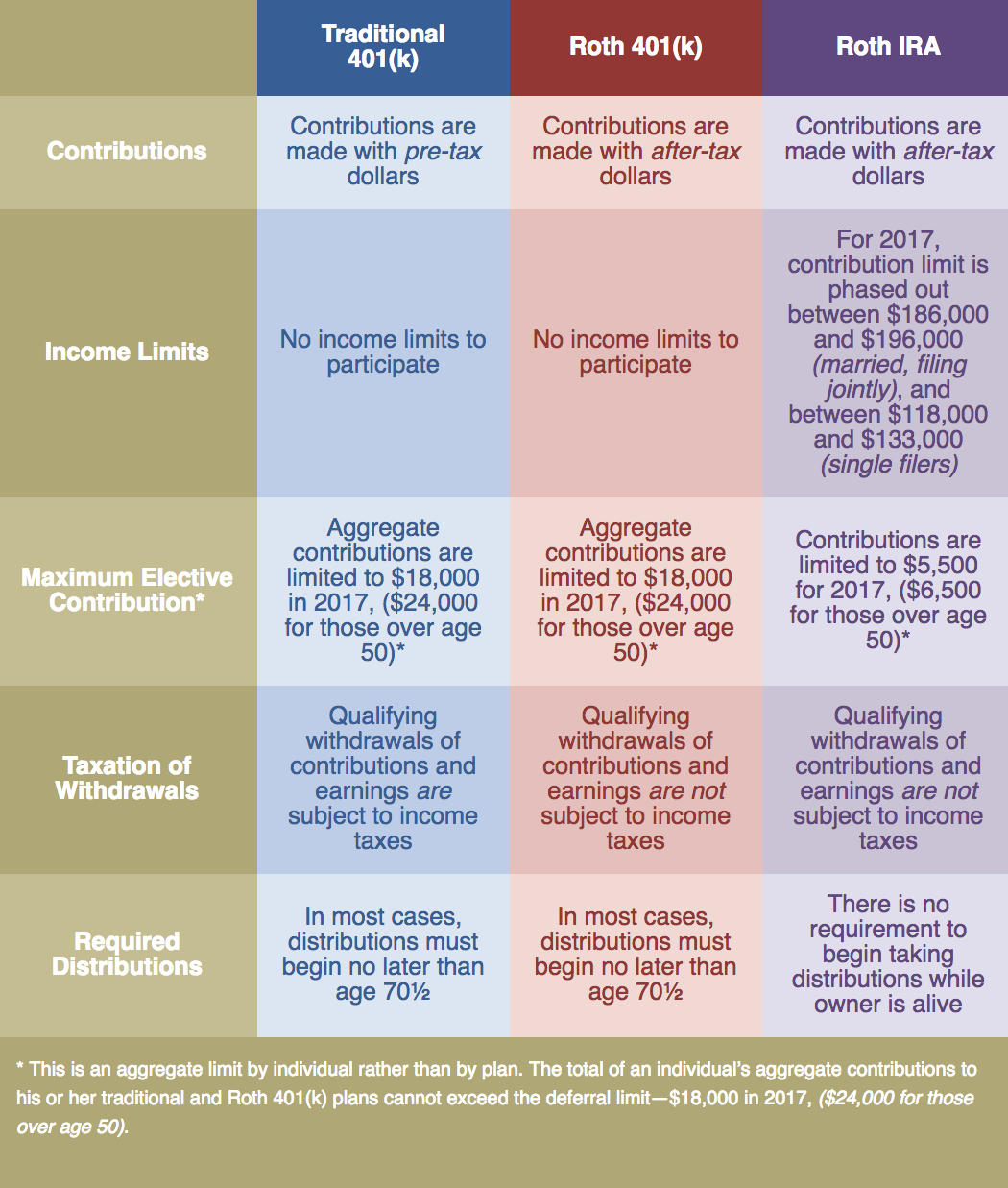While many people are familiar with the benefits of traditional 401(k) plans, others are not as acquainted with Roth 401(k)s.
Since January 1, 2006, employers have been allowed to offer workers access to Roth 401(k) plans.¹ And some have rolled out offerings as part of their retirement programs.
As the name implies, Roth 401(k) plans combine features of traditional 401(k) plans with those of a Roth IRA.2,3
With a Roth 401(k),contributions are made with after-tax dollars—there is no tax deduction on the front end—but qualifying withdrawals are not subject to income taxes. Any capital appreciation in the Roth 401(k) also is not subject to income taxes.
What to Choose?
Fast Fact: Roth 401(k) plans were made permanent by the Pension Protection Act of 2006. Source: IRS, 2016
The choice between a Roth 401(k) and a traditional 401(k) comes down to determining whether the upfront tax break on the traditional 401(k) is likely to outweigh the back-end benefit of tax-free withdrawals from the Roth 401(k).4
Often, this isn’t an “all-or-nothing” decision. Many employers allow contributions to be divided between a traditional 401(k) plan and a Roth 401(k) plan—up to overall contribution limits.
Considerations
One subtle but key consideration is that Roth 401(k) plans aren’t subject to income restrictions like Roth IRAs. This can offer advantages to high-income individuals whose Roth IRA has been limited by these restrictions. (See accompanying table.)
Roth 401(k) plans are subject to the same annual contribution limits as regular 401(k) plans—$18,000 for 2017, ($24,000 for those over age 50). These are cumulative limits that apply to all accounts with a single employer; an individual couldn’t save $18,000 in a traditional 401(k) and another $18,000 in a Roth 401(k).
Another factor to consider is that employer matches are made with pretax dollars, just as they are with a traditional 401(k) plan. In a Roth 401(k), however, these matching funds accumulate in a separate account that will be taxed as ordinary income at withdrawal.
Setting money aside for retirement is part of a sound personal financial strategy. Deciding whether to use a traditional 401(k) or a Roth 401(k) often involves reviewing a wide-range of factors. If you are uncertain about what is the best choice for your situation, you should consider working with a qualified tax or financial professional.
1. To qualify for the tax-free and penalty-free withdrawal of earnings, Roth 401(k) distributions must meet a five-year holding requirement and occur after age 59½. Tax-free and penalty-free withdrawal also can be taken under certain other circumstances, such as a result of the owner’s death or disability. Employer match is pretax and not distributed tax-free during retirement. Generally, once you reach age 70½, you must begin taking required minimum distributions.
2. Distributions from 401(k) plans and most other employer-sponsored retirement plans are taxed as ordinary income and, if taken before age 59½, may be subject to a 10% federal income tax penalty. Generally, once you reach age 70½, you must begin taking required minimum distributions.
3. Roth IRA contributions cannot be made by taxpayers with high incomes. To qualify for the tax- free and penalty-free withdrawal of earnings, Roth IRA distributions must meet a five-year holding requirement and occur after age 59½. Tax-free and penalty-free withdrawal also can be taken under certain other circumstances, such as a result of the owner’s death or disability. The original Roth IRA owner is not required to take minimum annual withdrawals.
4. The information in this material is not intended as tax advice. It may not be used for the purpose of avoiding any federal tax penalties. Please consult a tax professional for specific information regarding your individual situation.
The content is developed from sources believed to be providing accurate information. The information in this material is not intended as tax or legal advice. It may not be used for the purpose of avoiding any federal tax penalties. Please consult legal or tax professionals for specific information regarding your individual situation. This material was developed and produced by FMG Suite to provide information on a topic that may be of interest. FMG Suite is not affiliated with the named broker-dealer, state- or SEC-registered investment advisory firm. The opinions expressed and material provided are for general information, and should not be considered a solicitation for the purchase or sale of any security. Copyright 2019 FMG Suite.
DISCLAIMER: This website is for informational purposes only and does not constitute a complete description of our investment advisory services or any past performance. This website is neither a solicitation nor an offer to sell securities or investment advisory services except where we are appropriately registered or exempt from such registration. Information throughout this site, whether stock quotes, charts, articles, or any other statement or statements regarding market or other financial information, is obtained from sources which we and our suppliers believe to be reliable. However, we do not warrant or guarantee the timeliness or accuracy of this information. Nothing on this website should be interpreted to state or imply that past results are any indication of future performance. THERE ARE NO WARRANTIES, EXPRESSED OR IMPLIED, AS TO ACCURACY, COMPLETENESS, OR RESULTS OBTAINED FROM ANY INFORMATION POSTED ON THIS OR ANY ‘LINKED’ WEBSITE.
Back





